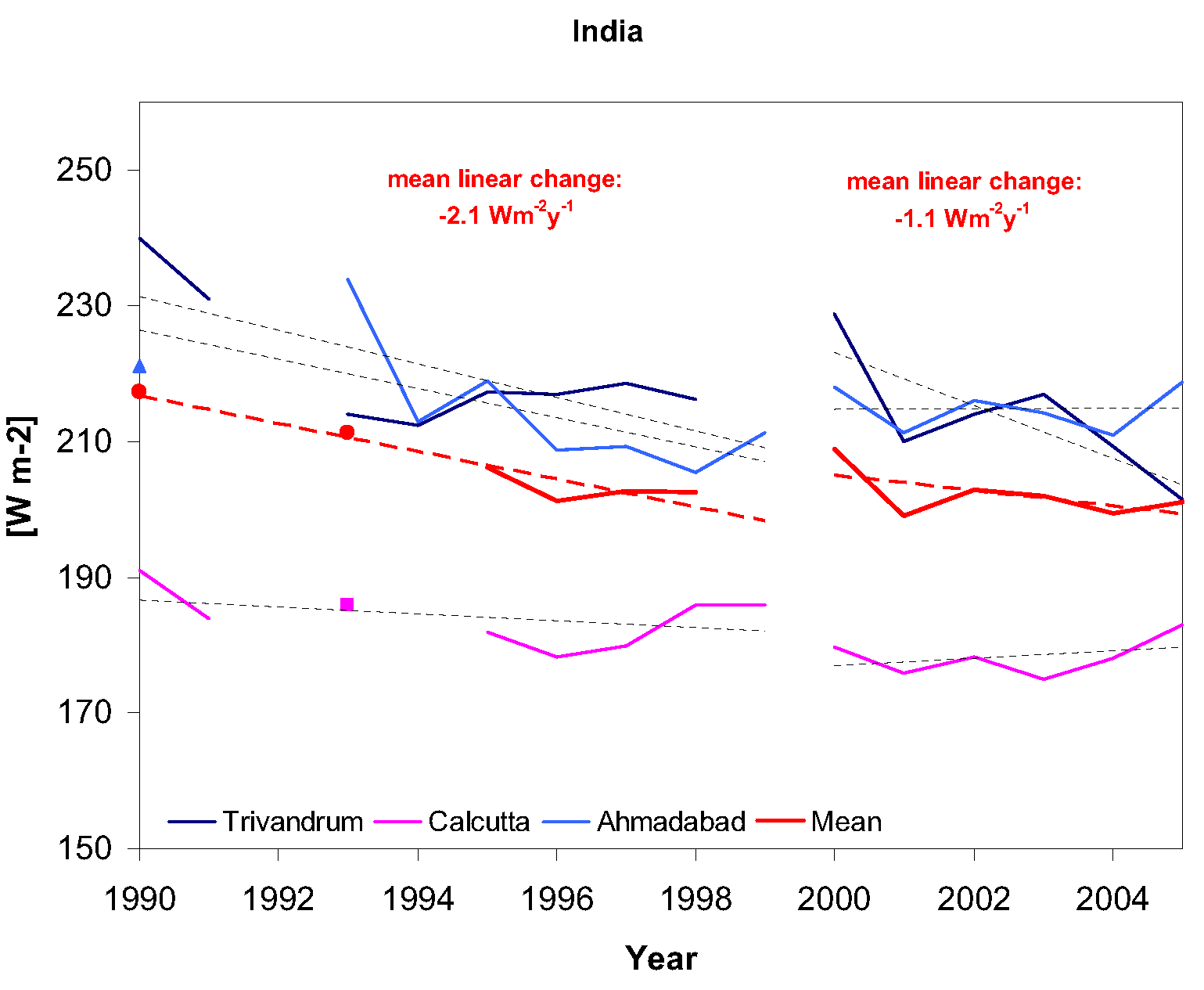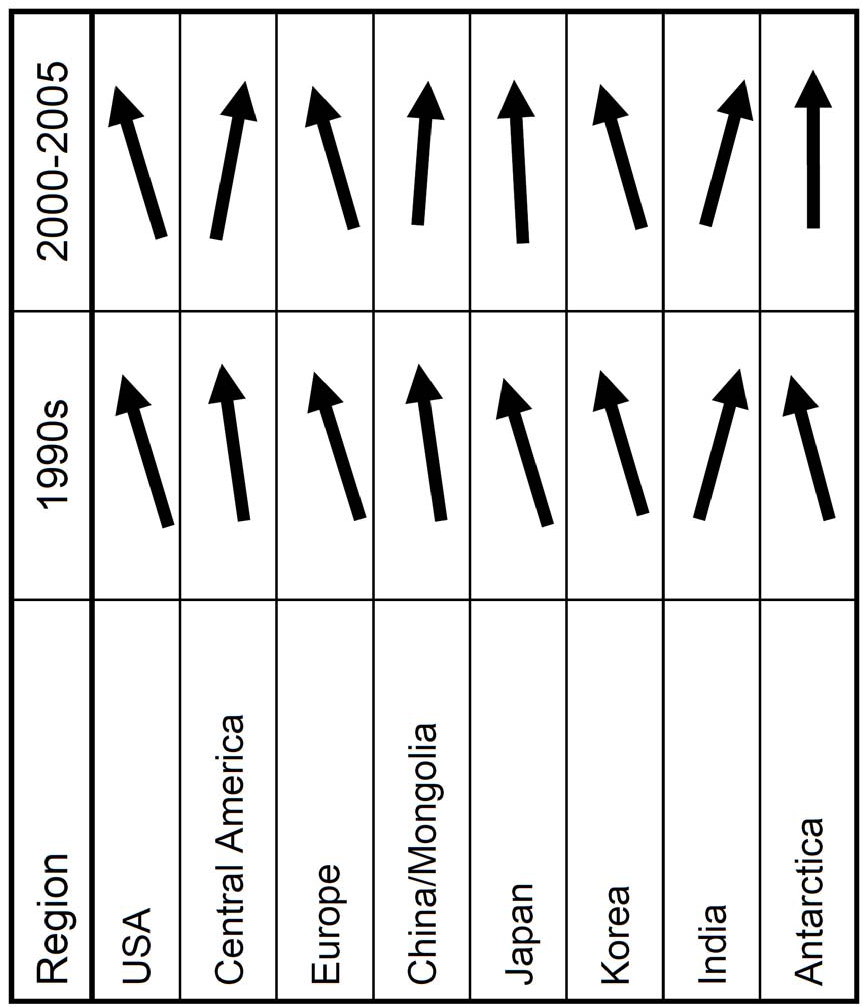Global Dimming and Brightening: An Update Beyond 2000
Submitter:
Long, Chuck N. — NOAA- Earth System Research Laboratory
Wild, Martin — Institute for Atmospheric and Climate Science - ETH Zurich
Ohmura, Atsumu — Swiss Federal Institute of Technology
Koenig-Langlo, Gert — Alfred Wegener Institute
Dutton, Ellsworth G. — NOAA/OAR/ESRL
Tsvetkov, Anatoly V. — World Radiation Data Centre
Area of research:
Radiation Processes
Journal Reference:
Science
There is increasing evidence that solar radiation at the Earth’s surface has not been constant over time, but has undergone climatologically significant decadal variations. This is indicated, for example, in indirect data from sunshine duration recorders, which show substantial decadal changes since their initiation in the late 19th century.
Direct surface radiation measurements started to become available on a widespread basis in the late 1950s, with the establishment of numerous radiation sites during the International Geophysical Year (IGY) 1957/58. Ba
Impact
This study investigates recent variations in downwelling surface solar radiation inferred from a comprehensive set of ground-ba
Summary
The tendencies for an increase in surface solar radiation (“brightening”) discussed in earlier studies for the 1990s are sustained at the beginning of the 2000s in several parts of the world, as documented at sites in Europe, the US and Korea. Stations in other regions suggest that the “brightening” levels off after 2000 (sites in Japan, Antarctica), or provide some indications for a reversal back to a dimming (sites in China, Central America). In summary, many sites still continue to observe an increase in surface solar radiation in the years following 2000, but the overall signal is not as evident and coherent as during the 1990s, with more sites showing stabilizing or even declining insolation. One may also speculate that the recent decrease in some areas of significant overall brightening may favor a more moderate temperature increase in the early 2000s compared to the 1990s, when brightening more substantially added to the greenhouse-induced warming. Overall global warming since the turn of the millennium may therefore be more readily attributable to the enhanced greenhouse effect, and no longer suppressed by surface solar dimming as in the period from the 1950s to 1980s or as enhanced by surface solar brightening as from the 1980s to 2000.



